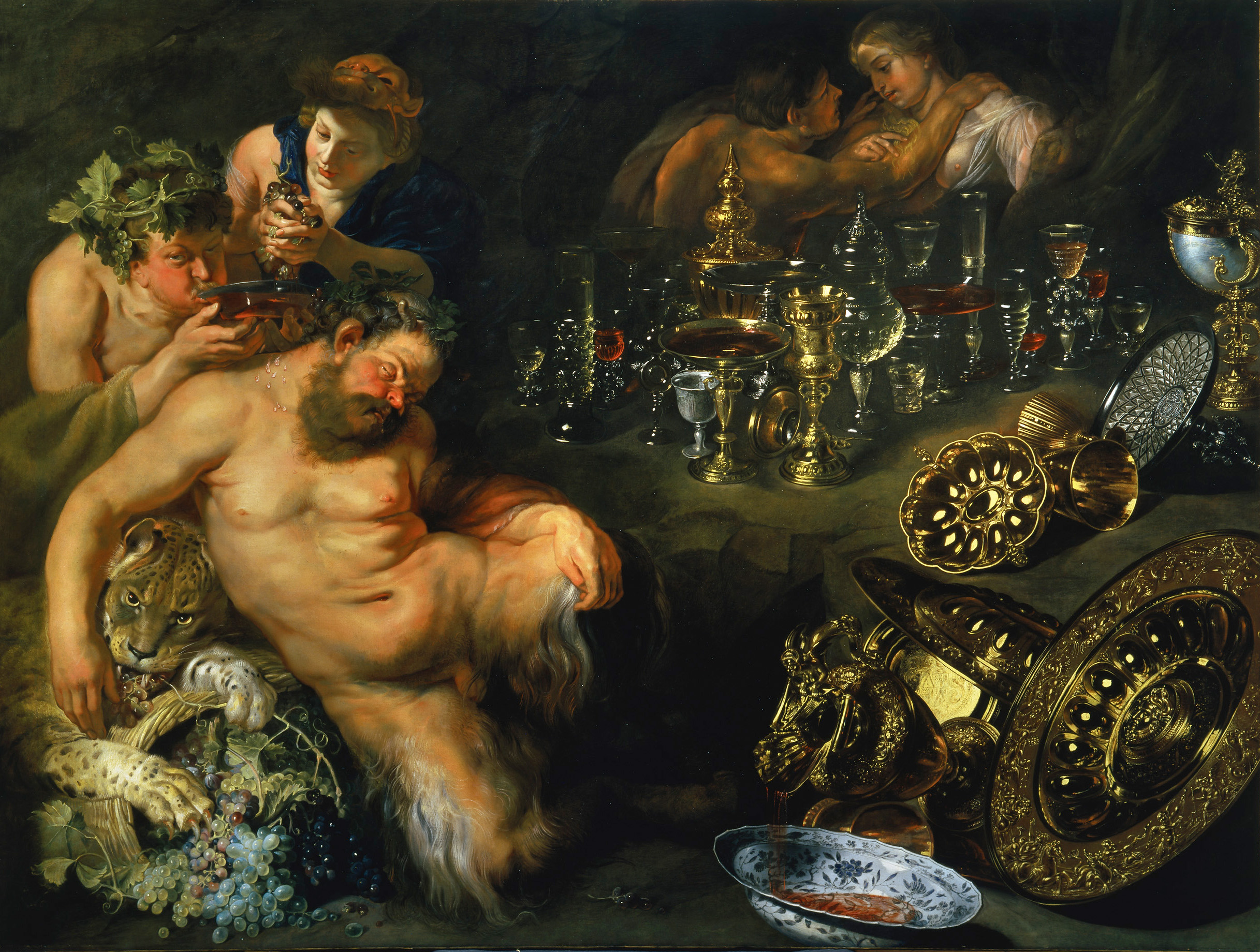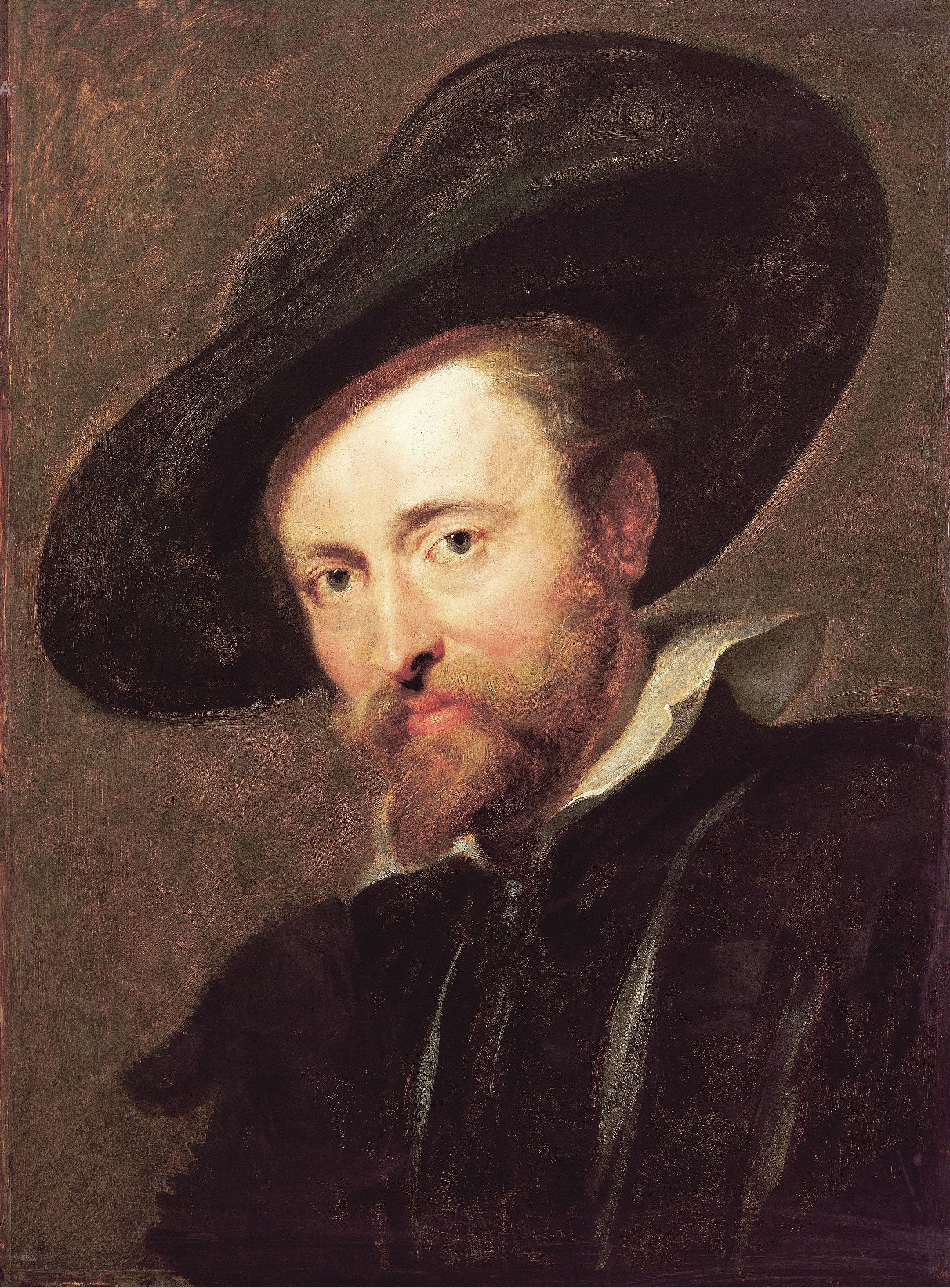The Dreaming Silenus is one of Peter Paul Rubens’ most extraordinary works, one which he painted shortly after his return from Italy between 1610 and 1612.
What is most striking is the imbalance of the composition, which separates into a group of figures centered on the drunken Silenus (with the legs of a goat given that he is one of the lecherous satyrs who roam the forests of Greek mythology) with Bacchus and the Maenads, and an overflowing still life with precious golden plates and bowls and countless drinking vessels. For Rubens, the painter of figures and historical scenes, this is an extremely unusual pictorial combination.
Where the wine comes from and how it gets down the drinkers’ throats is demonstrated by Bacchus himself. The mask that the girl has pushed up over her forehead is the pictorial symbol for the dual nature of man: a rational being who is at the same time subject to carnal desires. Both sides of this human nature can be stimulated by the enjoyment of wine, but it is the quantity that is crucial!
The depiction of the vessels goes far beyond a still life composition: it gives the impression of a treasure trove from a fairy tale. It is a picture of luxury and extravagance.
In this painting Rubens does not tell a story from Greek mythology. Instead he has conceived the image of a dream in which the inebriated Silenus becomes erotically stimulated—the loving couple in the background alludes to this—and at the same time sees himself drown beneath the mass of these sumptuous vessels as in a nightmare. Thus, Rubens has used the elements of antique bacchanalia to create his own myth of the sensual.
We present today's painting thanks to Academy of Fine Arts in Vienna; be sure to check out other paintings from their collection in our archive. Have a great weekend! : )
P.S. If you're interested in Greek mythology, read about the Parthenon's mythology and architecture here.


 Peter Paul Rubens
Peter Paul Rubens